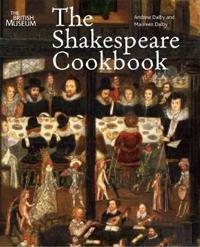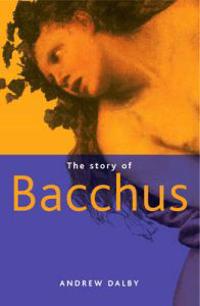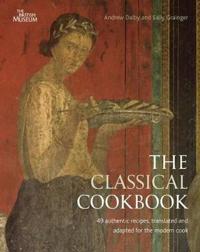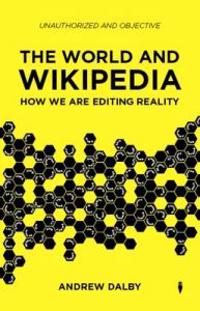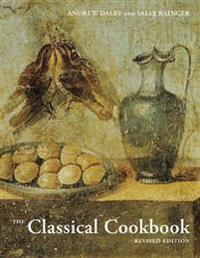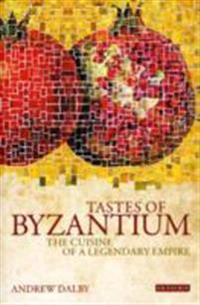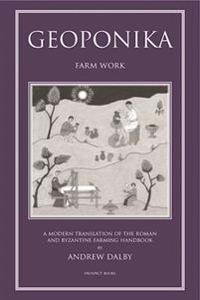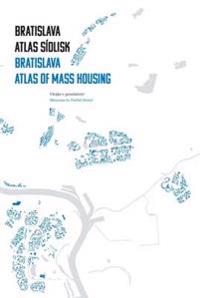The Shakespeare Cookbook (Pocket)
avAndrew Dalby, Maureen Dalby, Andrew Dalby
ISBN: 9780714123356 - UTGIVEN: 2012-12Shakespeare's working life, from about 1590 to 1615, was not only a period of rich activity on the London stage, but also one of prolific writing and publishing about food. Shakespeare himself used food in many of his plays: from memorable banquet scenes, to the use of food and feasting as metaphor.[...]
Dictionary of Languages: The Definitive Reference to More Than 400 Languages (Övrig)
avAndrew Dalby
ISBN: 9780231115698 - UTGIVEN: 2004-03-03Approximately how many languages compose the Bantu language group of central and southern Africa? What is the name of the language spoken in Hawaii by an estimated two thousand people? What Western European language is not known to be related to any other language family in the world -- and is consi[...]
Empire of Pleasures (Pocket)
avAndrew Dalby
ISBN: 9780415280730 - UTGIVEN: 2002-07-25An evocative survey of the sensory culture of the Roman Empire, showing how the Romans themselves depicted their food, wine and entertainments in literature and in art.[...]
The Story of Bacchus (Häftad)
avAndrew Dalby
ISBN: 9780714122557 - UTGIVEN: 200504Bacchus is best remembered for his gift to humanity of wine. With it he brought pleasure, but also savagery and death. Intriguing episodes drawn from an astonising range of sources, including obscure and fragmentary records detailing the songs chanted by initiates at their secret rites, this book [...]
The Classical Cookbook (Häftad)
avAndrew Dalby, Sally Grainger
ISBN: 9780714122755 - UTGIVEN: 201205The updated edition of this best-selling cookbook features a delicious collection of recipes from every strata of classical civilization, all accessible to the contemporary cook. Using a subtle mix of sweet and sour flavours, fragrant herbs, creamy cheesecakes and hearty red wines, ancient Mediterra[...]
The World and Wikipedia (Inbunden)
avAndrew Dalby
ISBN: 9780956205209 - UTGIVEN: 200910How We Are Editing Reality. Wikipedia has emerged as the reference source that most of us turn to most of the time. But how much do we know about it? And is it good enough to rule the world of knowledge? This book examines what our dependence on this unprecedented phenomenon means - now and in the [...]
The Classical Cookbook (Inbunden)
avAndrew Dalby, Sally Grainger
ISBN: 9781606061107 - UTGIVEN: 201205Tastes of Byzantium (Pocket)
avAndrew Dalby
ISBN: 9781848851658 - UTGIVEN: 2010-06For centuries, the food and culinary delights of the Byzantine empire - centred on Constantinople - have captivated the west, although it appeared that very little information had been passed down to us. Andrew Dalby's "Tastes of Byzantium" now reveals in astonishing detail, for the first time, what[...]
Geoponica (Inbunden)
avAndrew Dalby
ISBN: 9781903018699 - UTGIVEN: 2011-03Geoponika is one of the most celebrated texts to come out of the Byzantine renaissance promoted by the 10th-century emperor Constantine VII Porphyrogenitus. It was a gathering together of many classical and post-classical agricultural works, from Pliny in ancient Rome to the 7th-century Cassianus Ba[...]
Bratislava: Atlas of Mass Housing (Häftad)
avAndrew Dalby, Sally Grainger
ISBN: 9788055604787 - UTGIVEN: 201211Offering a detailed history on Slovakian architecture, this analysis covers the social, economic, and urban contexts of housing estate construction within the city of Bratislava. The book focuses upon the second half of the 20th century, individually analyzing each prefabricated residential estate i[...]

